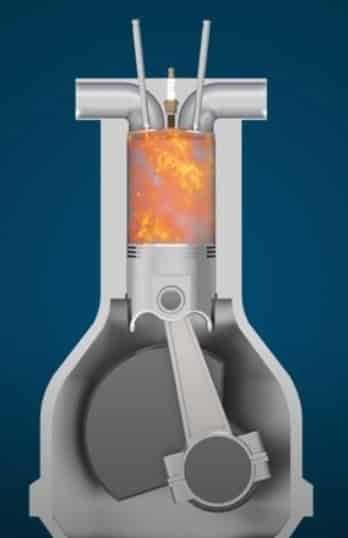Deprecated: mb_convert_encoding(): Handling HTML entities via mbstring is deprecated; use htmlspecialchars, htmlentities, or mb_encode_numericentity/mb_decode_numericentity instead in /home/u598013642/domains/motorcyclegear101.com/public_html/wp-content/themes/acabado/functions.php on line 2160
Deprecated: mb_convert_encoding(): Handling HTML entities via mbstring is deprecated; use htmlspecialchars, htmlentities, or mb_encode_numericentity/mb_decode_numericentity instead in /home/u598013642/domains/motorcyclegear101.com/public_html/wp-content/themes/acabado/functions.php on line 2160
Deprecated: mb_convert_encoding(): Handling HTML entities via mbstring is deprecated; use htmlspecialchars, htmlentities, or mb_encode_numericentity/mb_decode_numericentity instead in /home/u598013642/domains/motorcyclegear101.com/public_html/wp-content/themes/acabado/functions.php on line 2160
Deprecated: mb_convert_encoding(): Handling HTML entities via mbstring is deprecated; use htmlspecialchars, htmlentities, or mb_encode_numericentity/mb_decode_numericentity instead in /home/u598013642/domains/motorcyclegear101.com/public_html/wp-content/themes/acabado/functions.php on line 2160
Deprecated: mb_convert_encoding(): Handling HTML entities via mbstring is deprecated; use htmlspecialchars, htmlentities, or mb_encode_numericentity/mb_decode_numericentity instead in /home/u598013642/domains/motorcyclegear101.com/public_html/wp-content/themes/acabado/functions.php on line 2160
When you pull up to a gas station, you’ve got three choices for fuel. You can get regular, mid-grade, or premium. Which should you choose, and does it make a difference?
If you’re running premium in a bike that calls for regular because you think it will make more power or net you more mpg, you’re wasting your money. The only reason you need to upgrade your gas is if you’ve installed high compression pistons or advanced your ignition timing, or done some other mod.
Questions Answered In This Article
- Is High Octane Gas better For a Motorcycle?
- What Happens if You Put 87 in a Motorcycle?
- Best Fuel Brand For Motorcycles
- Is Ethanol Free Gas Better For Motorcycles?
Today we’ll explain octane ratings and what they mean for your motorcycle.
Your standard North American gas station offers three grades of fuel. You’ve got your regular, which is usually labeled in 87 octanes, you’ve got your mid-grade, which is typically an 89, and then you’ve got your premium, which is often a 91 or a 93 octane fuel.
European gas stations typically display higher numbers, but that’s only because they use a different rating system. The grades are equivalent.
Is High Octane Gas better For a Motorcycle?
When it comes to fuel grade and octane in particular, many people think it’s An indication of the gasoline’s power density. A higher octane gas will net more horsepower, get better mileage, or offer better thrall response.
Not quite. It’s an easy connection to make, given all the high octane cafes, high octane CrossFit gyms, and other brands and products that use the high octane label to convey potency.
High octane gas alone does not yield more power unless it’s preventing detonation, which is also known as engine pinging or knock. The higher the octane, The more resistant the fuel is to detonation.
To understand what detonation is and why you’d want to avoid it, let’s talk about the combustion process for a moment.
What Happens if You Put 87 in a Motorcycle?
Under normal conditions, the spark plug ignites the fuel mixture, and the flame front spreads evenly throughout the combustion chamber.

At 5000 rpm, This happens 40 times per second in a detonation situation; there’s spontaneous ignition somewhere in the combustion chamber after the plug fires, it’s a renegade flame front, and it’s Bad news.
When the two flame fronts collide, a massive pressure spike in the cylinder presents itself as a pinging or knocking noise.
The detonation shockwave hammers on the piston and can crack the piston crown, deform ring lands, collapse rod bearings, and cause other damage.
Detonation is more likely to occur when the fuel-air mixture is squeezed harder, which is exactly what performance engines with their high compression ratios and sky-high rev limits do.
So while high octane gas and horsepower go hand in hand, premium gas isn’t making more power.
It’s simply allowing the engine to work harder without getting rattled apart by detonation. It’s a little like drinking a protein shake.
If you do it in conjunction with a kick-ass workout, it helps you build muscle.
Meanwhile, drinking it without getting off the couch will fill your tank, but it won’t do you much good Otherwise.
If you’re wondering what octane fuel to use in your bike, it will be listed on a sticker on your gas tank, or you can find it spelled out in your owner’s manual.
Whatever the manufacturer recommends is what you should stick with because that’s What your bike was designed to burn.
That’s going to increase combustion pressure and temperature. But, unless your bike is knocking on 87 octanes, it’s not going to run any better or make any more power on 89 or 93 octane gas.
On the flip side, if you’re thinking of going cheap and putting regular in a bike designed to burn premium, well, here’s another look at those wrecked pistons.
However, if you’re forced to fill up on subpar fuel for some reason, don’t freak out.
Just avoid high load and high rpm riding until you can add an octane booster or fill up with the correct grade gas.
All that being said, there is more to fuel grades than just octane. As you go up in octane, you also go up in additive concentration.
Namely, detergents that were designed to keep your injector’s valves and piston crown clean.
The idea here is that a vehicle engineered to run on high octane gas is likely built to a higher state of tune. So internal cleanliness is essential for proper performance.
There is a concentration requirement for detergents, and about 50 retailers only put in the minimum.
This is usually what you find sold at no-name discount stations, and it can lead to carbon buildup on your piston crowns, your combustion chamber, and your valves, and in the long run, that can impede your engine’s performance.
Then there’s top tier fuel, which is what most big-name retailers carry. Top tier fuels contain a higher concentration of detergent additives, 2.5 times more at a minimum across the grades, with some premium stations using seven times the required amount.
So if you frequent the quicky mart for regular discount gas, the occasional tank of premium from a name brand top tier station may do your engine some good.
Best Fuel Brand For Motorcycles
Shell and BP are in the top ten largest gas suppliers in the USA and will supply gas that will be classed as premium. As we already suggested, you stay away from the bargain basement supermarket gas stations. If you do that, you can’t go far wrong.
Is Ethanol Free Gas Better For Motorcycles?
However, premium gas does have a higher concentration of detergents, which can keep your engine cleaner, which in the long run will help sustain power mileage and throttle response.
Go ahead and fill up with premium if it makes you feel better, don’t think it will make your bike any faster.
If you’re an occasional rider or store your bike for long periods during the winter months or maybe travel you’re in the service, you need to try to find some non-ethanol fuel for your bike.
It’s, going to cost more than premium, but it’s going to save you maintenance in the long run. If you can’t find ethanol, buy a little bottle of either the stable fuel stabilizer Lucas bail.
There’s a ton of companies that make fuel stabilizers. What that does is prevents the separation of ethanol-gasoline because ethanol is designed to absorb water.
It’s mostly for the manufacturers and sellers. You know, they got to count their pennies.
So when the fuel gets in, or the water gets in the fuel from the fueling station transfer process, ethanol soaks it up and allows it to run through your engine without much harm, and they don’t have to dump their tanks when they get water. In the fuel, ethanol takes care of it.
What can happen over time is the ethanol hits saturation point, separates, and falls to the bottom of your tank. That’s the first thing it gets sucked into your fuel system can clog your injectors up.
Of course, if you’re running carburation, it isn’t very pleasant. It can make your needle stick clog your jets. It’s probably worse on a carbureted engine.
It is fuel injection because you have to tear everything down, get it cleaned out, get it put back in and get the carbs to sink back up appropriately.
Every time you’re going to lose performance or your bike may not even start. Non-ethanol, fuel, or a fuel stabilizer will help you out with that.
In summary, more octane does not mean more power unless your engine has been modified to take advantage of the high octane fuel anti-knock index.
Related Articles
- 4 Things To Wear To Stay Warm On Your Motorcycle In WinterMost of us here ride to work every day all year round, and we have lots of personal experience when it comes to taming the elements.
- How To Clean Your Motorcycle In 5 Easy StepsWe all love a clean and shiny motorcycle but knowing which cleaning products to buy can sometimes be a little daunting, and so too can be the method to clean your motorcycle.
- How Does A Manual Transmission Work On A MotorcycleFor most people, their motorcycle transmission is one of the most mysterious parts of their bike. How does it work, and why do we shift down into first, but then
- How Sprockets Affect Speed on Motorcycles And WhyIt doesn’t matter if you’re a racer; if you’re just into trails riding your dual-sport, your bike can be geared differently to your performance needs. Not only on a dirt
- Is It Hard Learning To Ride A Motorcycle? Myth BustedLearning to ride a motorcycle isn’t that hard. most new learners take between two to eight weeks to get riding with daily practice. How long it takes to learn to ride depends on their skills and their bike.

